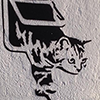Search the Community
Showing results for 'BSOD'.
-

1.10.0 Affinity Photo much slower than 1.9.2
Chris B replied to jorismak's topic in V1 Bugs found on Windows
I would have a look at the Event Viewer in Windows and pass some of those to us. The entire system restarting is somewhat worrying - have you ever had a BSoD? The beta essentially becomes the retail - we test the betas and then they get uploaded to the server. There should be no difference other than the beta might take longer to start up as we have a few extra diagnostics running (I believe). -
Hi @Bad_WolfSorry for the delay, we are very busy at the moment and some posts have gone unanswered. Are you still having an issue when going to print from within our apps? Are you running the latest versions of Affinity on your system? Have you tried updating your printer drivers as if you are getting BSOD, this will be caused by something else. This is because our apps are user-mode applications. Only kernel-mode applications (i.e. drivers) are capable of that.
-
Hello @vieles welcome to the forums. BSODs are usually caused by faulty or outdated drivers. The stop code indicates which driver or which process led to the BSOD (blue screen of death). Without knowledge of this, it is very difficult to help. With a small tool (Bluescreenviewer) you can read out some more information and post it here. You can download it here: http://www.nirsoft.net/utils/blue_screen_view.html
-
I purchased Affinity Photo from MS Store over a year ago and it worked smoothly with Windows Version 1809. Since I upgraded to Windows Version 1903 on August 2019, I ran into problems with Windows update KB 4517389 that gave the BSOD right after installing the update on Nov. 11, 2019, and most recently as of Dec. 14, 2019 with Windows update KB 4524570 that shut down the AF Photo program (without BSOD) while saving a file in save-as mode to ".afphoto". In both instances, upon uninstalling these 2 updates, KB4517389 & KB 4524570, AF Photo worked fine again. Fom now on, I will try to delay any MS-issued Cumulative Windows Updates for Version 1903 as long as possible until a permanent fix is availble. I don't whose fault is it but kind of suspecting it's from MS!
-
Hi everyone, I'm new to this forum. Like some of you here, I also installed the trial version of Affinity Photo from their website. I installed it on Windows 10 with all the latest Windows update (including the November one). I have it on Mac too but had to check on Windows. Since everything seemed to be OK, I decided to purchase it, but on Microsoft Store. That's when I would get my first ever BSOD on my new Lenovo laptop after 3 months of smooth operating. This would happen at every launch of Affinity with the same issue related to cldflt.sys. I deactivated cldflt.sys at system startup ("sc config cldflt start= disabled" in Command Prompt, without the quotes) Deactivated cldflt for the current session (sc stop cldflt) Started Affinity Photo which worked fine then. I reactivated cldflt for the current session (if I remember well), and Affinity stayed alive. So I reactivated cldflt for the next system startups too (sc config cldflt start= auto), rebooted Windows, launched Affinity Photo and got no more BSOD. Note 1: be sure to have a space after the equal sign. Note 2: you can check that cldflt is working by typing "sc qc cldflt". I could also read my OneDrive local files, so the service was working. However I cannot see cldflt listed in Services. I also checked with Sysinternals Autoruns64.exe tool, but I still couldn't see this service listed anywhere, though I now the location of the file (system32\drivers\cldflt.sys). Note 3: maybe step 1 was superfluous, but all this worked for me, even if I am not qualified to give any explanation. Hope that helps.
-
Thanks @DWright and @HarriK - Unfortunately I rely on OneDrive for my daily workflow so cannot uninstall it. I read @HarriK's linked thread, dissapointing its almost a month with no proper response. Nothing else has ever produced a BSOD on this device, it's clearly an interaction from Affinity Photo causing it and they can't keep saying that Photo cannot cause a BSOD - basic logic shows it is. Think I'll push for a refund until this is resolved.
-
But consider that: 1. The Affinity applications cannot, themselves, cause a BSOD, and 2. We have seen other instances where recent Windows updates have caused issues in cldflt.sys (a Microsoft program) in various customer configurations, running various applications, and even caused failures of various parts of Windows 10, itself. I, personally, have seen this on my system. Install a particular MS update, and start getting consistent BSOD's running Affinity applications. Remove the update, and the failures stop. Put it back on, they start again. Take it off, they stop. I think it's perfectly fair to blame MS and want them to fix their problem.
-

Blue screen when substituting fonts for PDF
Sean P replied to tonyl09's topic in V1 Bugs found on Windows
Hi tonyl09, Unfortunately this is not something being caused by our software. User mode applications (i.e our apps) are not capable of causing a BSOD on Windows. It is only kernel-mode applications (in most cases drivers) that can cause them. The cldflt.sys file listed is one that belongs to Microsoft's OneDrive. There does seem to be a few users (notably HP machines) who are getting this in other applications such as Outlook when saving attachments: https://answers.microsoft.com/en-us/windows/forum/all/onedrives-cldfltsys-causing-ntfssys-bsod/d2ef7f16-9e45-406f-95ca-6e595271e6d9 I would suggest you disable One Drive for the time being and stop it from starting when you turn your machine on and see if that improves the situation. -

Crashes to desktop on trying to move a picture
Joachim_L replied to Caliandris's topic in V1 Bugs found on Windows
As stated from the developers: A BSOD can't be caused by an (user-mode) application, only a faulty driver, so I would check that first. -
Not true. The so-called BSOD or "blue screen of death" (technically a system stop error) occurs only when the OS itself encounters a fatal error it cannot recover from. There are only a few things that can cause that: hardware issues (like defective RAM or a malfunctioning GPU or CPU), faulty hardware drivers, or issues in the low-level software processes running in the Windows hybrid kernel. Application level software cannot be the direct cause of any of these things regardless of whatever calls they might make, in part because as long as the OS & the hardware is functioning properly, there is no way for the calls applications make to access low level processes directly. However, if for any reason the OS or its hardware is not all functioning properly, then any number of 'generic' calls that involve low level processes can leave the system in an unstable state, including calls an application might make prior to the one that triggers the fatal error. Since different application workflows make calls in different sequences & they do not all make the same calls, it is entirely possible that only one or a few applications will trigger the BSOD.
- 13 replies
-
- affinity publisher
- bug
-
(and 3 more)
Tagged with:
-
Hi guys, Was it a Blue Screen of Death you were getting? If so was it in the cldflt.sys file? We've had a few reports of this with Windows Store users, but unfortunately this is not something being caused by our software. User mode applications (i.e our apps) are not capable of causing a BSOD on Windows. It is only kernel-mode applications (in most cases drivers) that can cause them. The cldflt.sys file listed belongs to Microsoft's One Drive (which I believe is tied into parts of the Save dialog) so that would explain why it happens in Designer when attempting to save files. There does seem to be a few users (notably HP machines) who are getting this in other applications such as Outlook when saving attachments: https://answers.microsoft.com/en-us/windows/forum/all/onedrives-cldfltsys-causing-ntfssys-bsod/d2ef7f16-9e45-406f-95ca-6e595271e6d9 I would suggest you disable One Drive for the time being and stop it from starting when you turn your machine on and see if that improves the situation.
-
Hello, I dont have this KB4515384 installed on my windows. However, After I uninstalled rivatuner, Photo started to work ok. But Designer from microsoft store gave a BSOD quickly after starting the program. Bsod mentioned a system file (cldflt.sys) as the cause. Googling told this file to be related to onedrive. I disabled this system file (cldflt.sys) with command prompt as admin and then also Designer started to work ok.
-
Hello, After I uninstalled rivatuner, Photo started to work ok. But Designer from microsoft store gave a BSOD quickly after starting the program. Bsod mentioned a system file (cldflt.sys) as the cause. Googling told this file to be related to onedrive. I disabled this system file (cldflt.sys) with command prompt as admin and then also Designer started to work ok.
-
Dear Komatös, thanks for the suggestion. I'll try it over the weekend. However, that the BSOD arrived after Affinity blocked for the second time, and has not done so for many years, is enormously suggestive. The PC didn't crash yesterday, probably because I used the task manager to stop the Affinity application after a few minutes, whereas today I just let it run to see what would happen. And now I know. It looks like Affinity is using some sort of system resource until it runs out. It isn't CPU, but maybe it is memory or threads, or? I don't know how Affinity is written, but maybe there is a race condition between several threads or processes. However, I am 99% sure that the proximate cause is the Refine function, perhaps provoked by working on a low-contrast image.
-
Welcome to the forums, Crashing as in just the App closing or your system crashes (BSOD) type? Big difference on what's causing the crash. Please go here and provide as much info as possible... https://forum.affinity.serif.com/index.php?/forum/71-bug-reporting/
-
Welcome to the Serif Affinity forums. I'll guess that your use of "blue screen" indicates you're on Windows. First, Affinity Photo cannot cause a Blue Screen of Death. It is a user-mode application, and Windows is responsible for ensuring that if the application misbehaves it is the application that fails, not the system. If you got a BSOD then it was a Windows error, or a device driver error. The likely issue is with your device drivers, and in particular your video-card (GPU) driver. So you should make sure they are up-to-date. As a workaround, though, check your Affinity Photo Preferences (Edit > Preferences, on Windows). Look in the Performance tab, and near the bottom you'll see an option for Hardware Accelaration (OpenCL), which was a new function in 1.9 and later. If it is enabled, disable it and see if that helps. Apparently there are some GPU drivers out there that claim to support OpenCL but do so poorly, and crash. Or, it is possible that over time your Windows system has gotten an incorrect mix of different device driver levels installed. Basically, though, it is not an Affinity Photo problem, though it is always possible that Photo is doing something correctly that is exposing an error in some more-privileged part of the system (Windows, or the device drivers).
-

Full Blue screen crash... "Thread_Stuck_in_device_driver"
Mark Ingram replied to Carbon's topic in V1 Bugs found on Windows
@Carbon, try the tool @Komatös has suggested. A BSOD can't be caused by an (user-mode) application, only a faulty driver. -

Full Blue screen crash... "Thread_Stuck_in_device_driver"
Komatös replied to Carbon's topic in V1 Bugs found on Windows
"Thread_Stuck_in_device_drive" This error can occur with an outdated BIOS, outdated drivers or, in the worst case, faulty hardware. In the latter case, only a burn-in test will help and, after the BSOD has occurred, an evaluation of the .dmp file, e.g. with Blue Screen View. -
Account Syncing & Downloading Asset crashes Photo
Stinn replied to Wireless's topic in V1 Bugs found on Windows
It's not the best to expect everyone to be up to date though. I had to install the October update myself manually through the Update Assistant, Windows update would not offer it to me. With the 2004 update, I had to do that too and a bunch of extra stuff because it would BSOD every time trying to install the update until I found out that turning off some Windows features that are activated by default for everyone actually allowed the update to succeed. You can't expect people to be up to date, unfortunately. And even if they try to be up to date, if they're not very knowledgable on the ins and outs of Windows it might mean they can't even upgrade even if they wanted to. I think Serif should advise before updating that it'd be better to stay on an older version (EDIT: of Photo) if they rely on new Windows features to be honest. Windows update just isn't stable enough to expect everyone to be even reasonably up to date. -
Hello @Matalmi That is not Serifs fault. I also had to downgrade Adrenalin 21.4.1 because a driver component (RyzenMasterDriver.sys) always caused my computer to BSOD (BlueScreenOfDeath) shortly after booting and restarting. - Solved - DDU did it's job. 😜
-
That should mean that you have a hardware problem, or a device driver problem, or a Windows problem. A BSOD includes an error description on the screen. What does it say? What do the Windows admin tools (event log, etc.) show as the cause of the problem?






